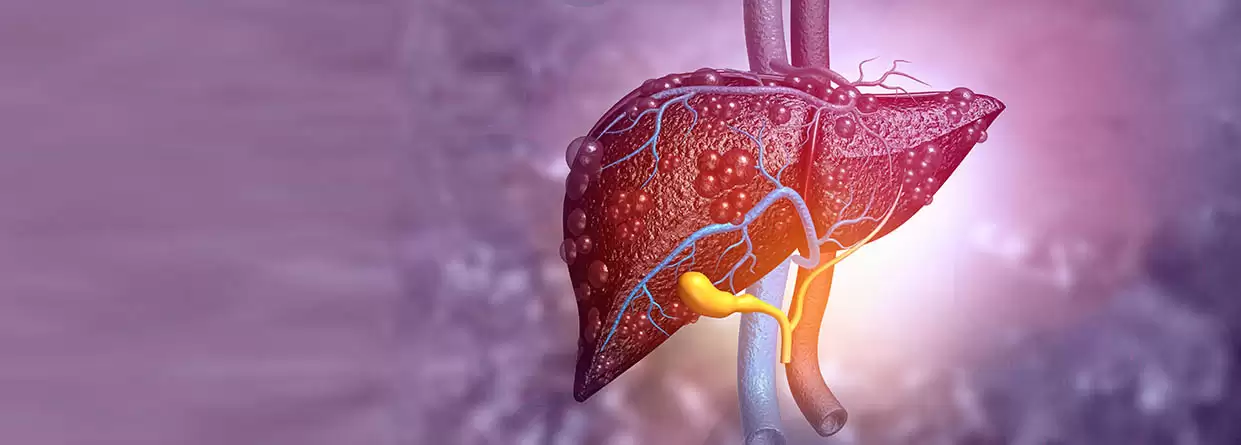
 Ambulance Services: 07340054470
Ambulance Services: 07340054470
Gastro Science | Posted on 05/12/2020 by RBH
Fatty liver or medically referred to as hepatic steatosis is a condition where excessive fat builds up in the liver, causing severe health issues. Normal fat in the liver is normal, but when there is excessive accumulation of fat in the liver it leads to a fatty liver. The liver is the second largest organ of the human body, which is responsible for extracting nutrients from food, as well as filtering toxic substances from the blood. When there is an excessive build-up of fat in the liver, it causes the liver to become inflamed which ultimately damages the liver and causes scarring. Over time scarring of the liver leads to liver failure.
A fatty liver caused due to excessive alcohol is referred to as alcoholic fatty liver disease (AFLD). In other cases, where the condition is caused due to other reasons, it is called non-alcoholic fatty liver.
Fatty liver is a condition that occurs when the body produces excessive fat or does not process fat as effectively as it should. This excessive fat is stored in the cells of the liver, which ultimately causes health problems. This accumulation of fat can be because of several reasons such as:
Some other uncommon causes of fatty liver include:
In most cases, the fatty liver does not cause any significant symptoms until it reaches a complex stage. However, in the initial stages of fatty liver, a person might experience weakness, tiredness, discomfort, or pain in the upper right portion of the abdomen. Over time, fatty liver can cause severe health problems such as scarring of the liver, which is known as liver fibrosis. When liver fibrosis intensifies to a complex stage it is called cirrhosis.
Some symptoms of cirrhosis include:
Cirrhosis is a life-threatening health problem and must be given immediate medication care.
Since fatty liver does not produce any significant symptoms in the initial stages, it is important to get it medically diagnosed. The doctor will study medical history and then conduct a physical examination and other tests to diagnose the condition.
Medical History: The doctor will analyze the family's medical history, lifestyle habits, current medical health, ongoing medications, and recent health changes. Moreover, the doctor will also check for any symptoms – such as appetite loss, fatigue, etc. – that could indicate a fatty liver.
Physical Examination: The doctor will conduct a physical exam by pressing or palpating the abdomen to check if there is any swelling or enlargement of the liver. In many cases, the liver may be inflamed but not enlarged.
Tests: To confirm the analysis, the doctor will recommend a blood test to detect liver enzymes. In case, the liver enzymes are elevated, it is a clear sign of live inflammation – which is caused because of fatty liver. For a patient who has elevated liver enzymes, the doctor will suggest additional tests.
Imaging Exams: To know the condition of the liver, the doctor will suggest one or more imaging exams including ultrasound, CT, or MRI. These tests will check for excessive fat or any other problems with the liver. In severe cases, the doctor can also suggest vibration-controlled transient elastography (VCTE, FibroScan) which uses low-frequency sound waves to assess the stiffness of the liver; this is an indicator of liver scarring.
Liver Biopsy: In a liver biopsy, the doctor will use a needle to remove a small piece of the liver tissue for examination. This will help to detect fatty liver disease and liver scarring.
Currently, there are no medications to cure the fatty liver problem; however, the symptoms can be treated individually and overall health can be controlled through some lifestyle changes such as below:
For patients, who develop a severe form of liver disease – cirrhosis, the doctor will suggest additional treatment options along with lifestyle modifications. These include medications and surgery. In case of worsening conditions, the patient might need a liver transplant.
That said, fatty liver can be easily avoided provided a person takes a proper diet, maintains a healthy weight, undertakes adequate physical activity, and limits alcohol consumption. Continuous monitoring and regular health check-ups can effectively work to avoid the problem on the whole by providing early warning signs.